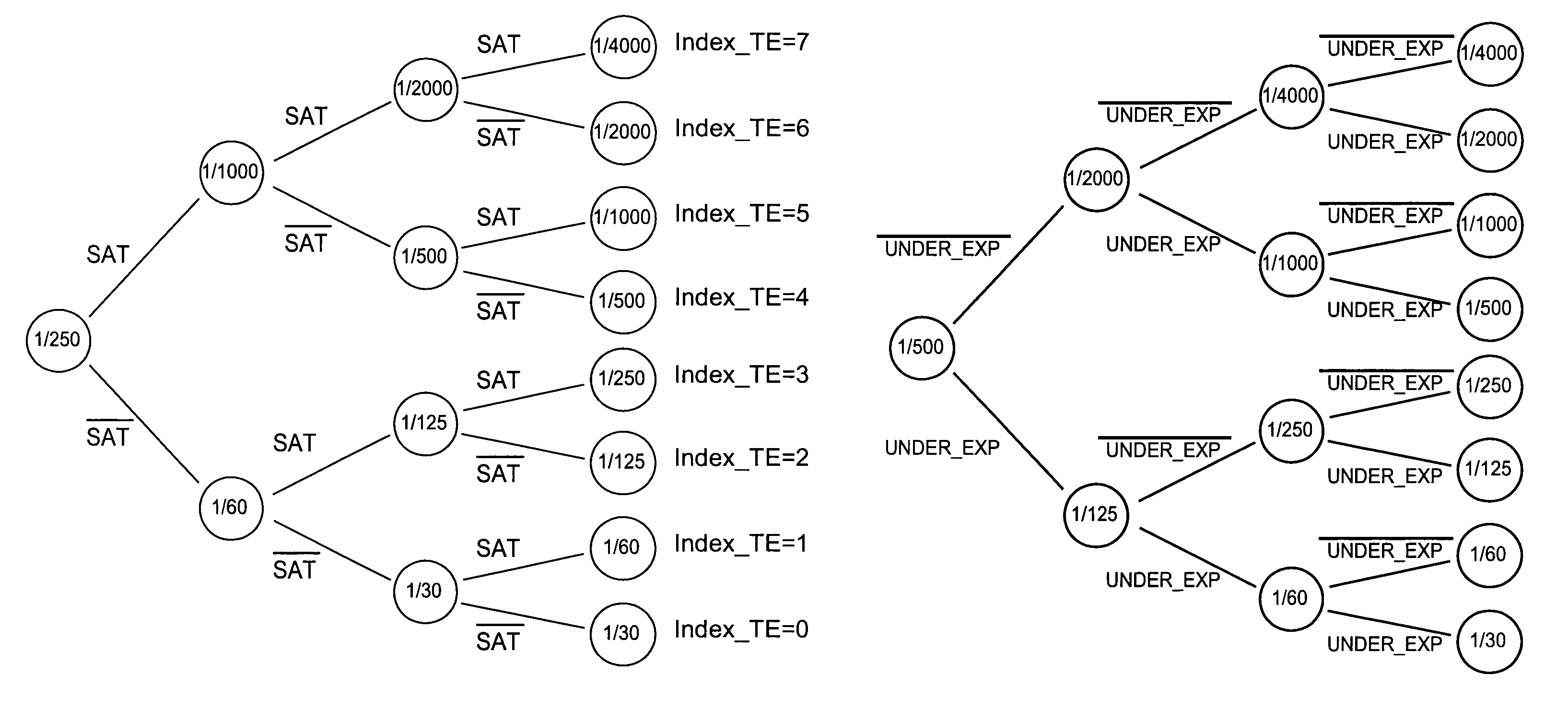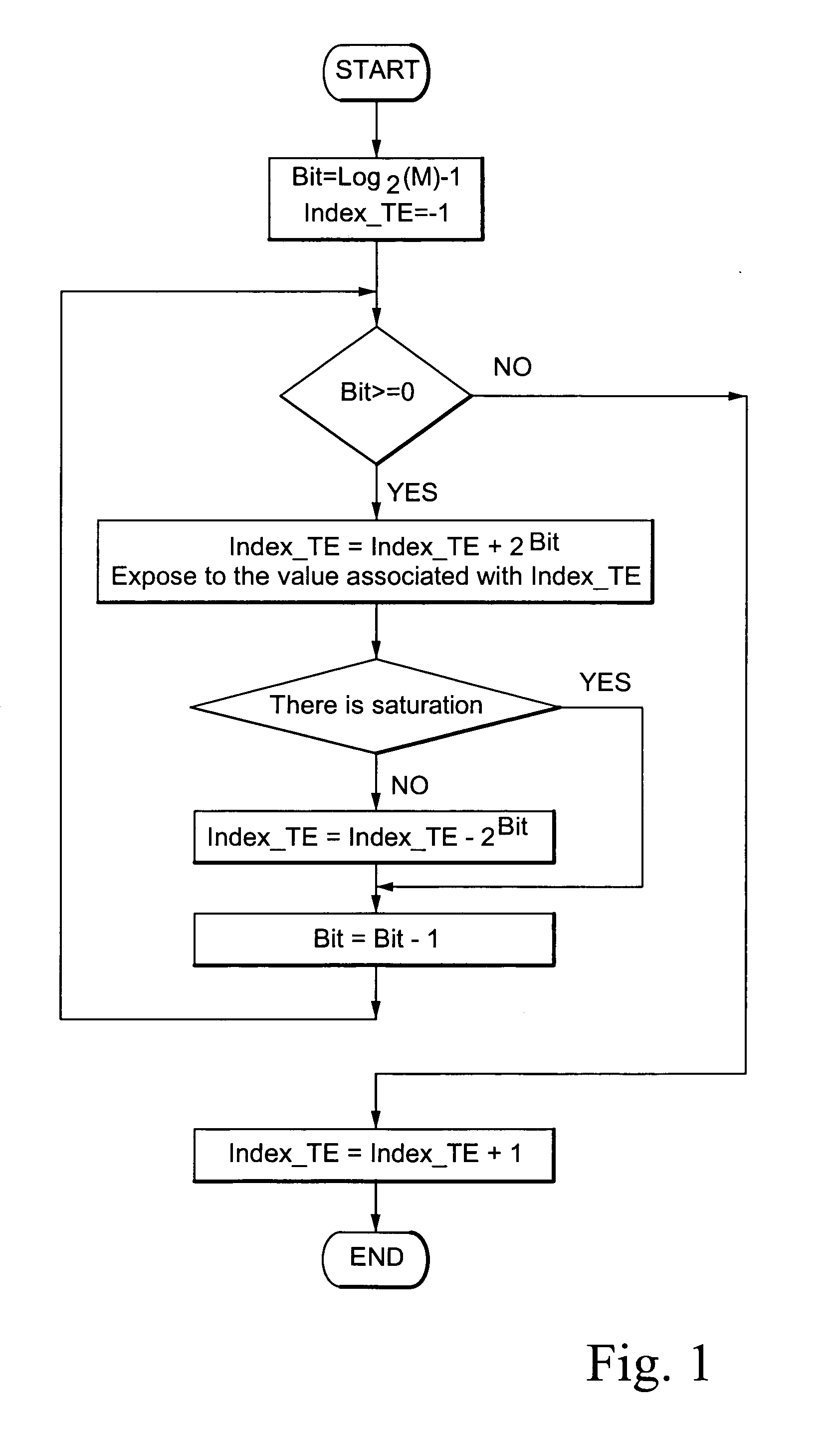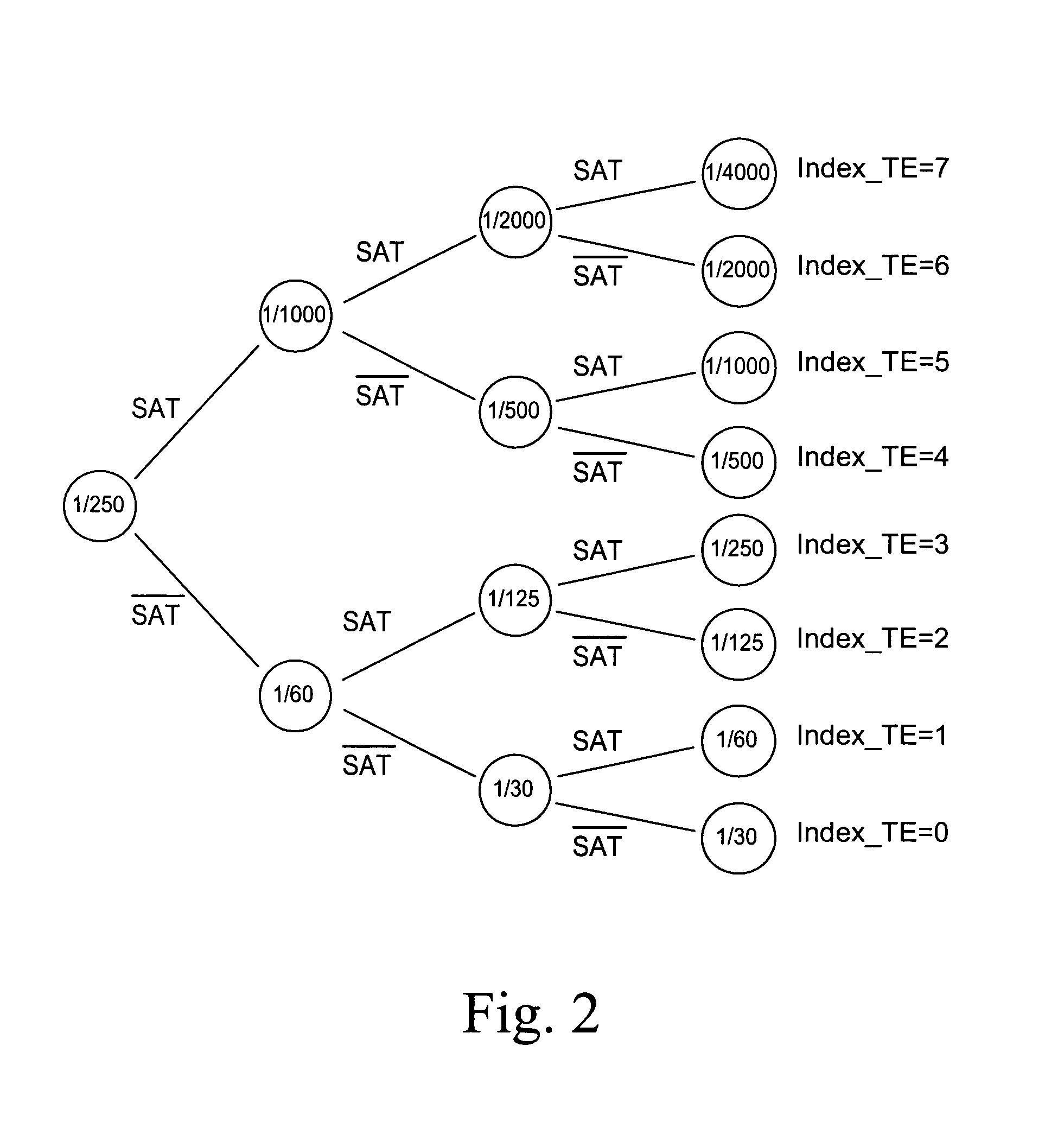Process for regulating the exposure time of a light sensor
a light sensor and exposure time technology, applied in the field of light sensor exposure time regulation, can solve the problems of inability to detect details having small sizes, low resolution acquisition of images on the sensor, and inability to detect details with small sizes, so as to avoid conditions of strong saturation of images and increase image resolution
- Summary
- Abstract
- Description
- Claims
- Application Information
AI Technical Summary
Benefits of technology
Problems solved by technology
Method used
Image
Examples
Embodiment Construction
[0059]The process of the invention allows, by successive approximations, the determination of an optimum exposure time according to the variations of luminosity of the surface on which the image to be acquired is to be found and of the environment in which the light sensor is located (for example, a CCD or CMOS sensor, whether linear or of matrix type).
[0060]The process begins with the setting of an initial exposure time in the sensor equal to a value chosen in a first range of M prefixed values which are defined between a minimum value and a maximum value. Advantageously, the M values are a subset, thought to be particularly interesting, of the whole of the settable values of exposure times for the sensor in question and are stated by the manufacturer. In the examples shown in the figures attached, the values of exposure time chosen are eight and are, in fractions of a second: 1 / 30, 1 / 60, 1 / 125, 1 / 250, 1 / 500, 1 / 1000, 1 / 2000, 1 / 4000.
[0061]Once an initial exposure time is set, an ima...
PUM
 Login to View More
Login to View More Abstract
Description
Claims
Application Information
 Login to View More
Login to View More - R&D
- Intellectual Property
- Life Sciences
- Materials
- Tech Scout
- Unparalleled Data Quality
- Higher Quality Content
- 60% Fewer Hallucinations
Browse by: Latest US Patents, China's latest patents, Technical Efficacy Thesaurus, Application Domain, Technology Topic, Popular Technical Reports.
© 2025 PatSnap. All rights reserved.Legal|Privacy policy|Modern Slavery Act Transparency Statement|Sitemap|About US| Contact US: help@patsnap.com



